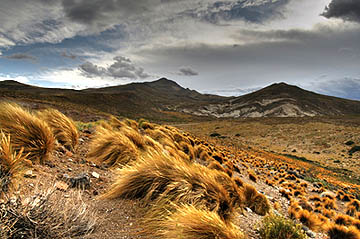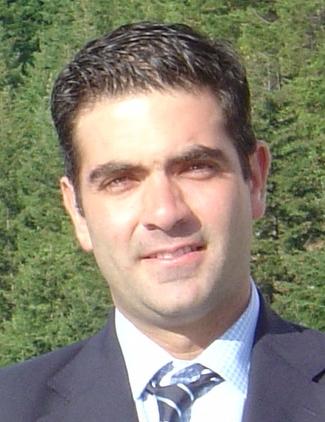Like the rugged cowboy roaming the plains of the American Wild West, the image of the untamable gaucho is embroidered into the fabric of the Argentine consciousness. But this image is fading as the gauchos’ traditional sheep grazing practices are turning Patagonian grasslands into a desert.
Argentina is home to the majestic southern temperate grasslands comprised of vast rippling meadows harboring an array of wildlife and plant life. This unique ecosystem absorbs and stores large amounts of carbon and grows grass to feed sheep. Ranching on grasslands has shaped the economic and cultural development in Patagonia, but overgrazing has led to desertification in much of the region. And Argentina’s unstable economic and political conditions aren’t helping the cause.
While Argentina’s grasslands cover an area almost the size of Alaska, only a small percentage is protected. The Nature Conservancy is working with ranchers, government officials, landowners, and other organizations to preserve a swath of Argentine grasslands as large as Florida.
Backdrop
Nearly 90 percent of the grassland in southern Argentina is privately owned and most of this region is used for grazing sheep. Brought to the Americas by European settlers, sheep have been ranched in Argentina since the late 19th century. Patagonian sheep are raised primarily for their wool and produce some of the finest merino in the world—most of which is sold on international markets.
Often grazed year-round, however, and in flock sizes too large for rancher’s lands, sheep in Patagonia are causing problems. A flock of sheep can gobble up great expanses of native grasses, and in southern Argentina, they’re clearing some serious vegetation. A typical sheep, for example, spends between 7 to 8 hours a day eating and consumes between 2 and 4.5 pounds of vegetation a day. In addition to vegetation loss, overgrazing equates to lost habitat for other animals and damages waterways by polluting them with runoff and silt from erosion.
In addition to overgrazing, this rugged region’s dry climate, strong winds, and cold winters are natural contributors to the desertification processes. These evironmental factors paired with conventional grazing management have resulted in drastic consequences. Some ranches, for example, have been abandoned due to a loss of habitat and an inability to sustain sheep.
There Is Still Hope…
When flock sizes, lands, and riparian areas are properly managed, ranchers, sheep, and native plants and animals can thrive together. The Nature Conservancy’s new Patagonian Grasslands of Argentina Conservation Project is currently coordinating efforts to bring scientists together with land managers to develop a truly sustainable grazing model. However, as management decisions lay solely in the hands of property owners, the Conservancy’s most critical challenge is to identify incentives for landowners to adopt and implement such a model.
Opportunities for Future Generations
Argentina is the eighth largest country in the world, but only a small portion of the country is under official environmental protection. Furthermore, an unstable national economic environment creates a political climate where public policies do not readily provide landowners with incentives for conservation or for adopting sustainable management principles. There are two ways to look at countries with no real concept of conservation: a lost cause for the environment, or an opportunity to let markets do what they do best—create incentives for ranchers to enhance rather than exploit the environment. The latter is the opportunity that the Patagonian Grasslands Office of the Conservancy is working on. Some of the Conservancy’s initial tools to preserve the southern grasslands include:
Corporate Support
Contracts have been initiated with U.S. and Australian clothing companies that have strong corporate social responsibility and a serious commitment to improving the environmental quality of their production process. This is not a new concept. The Orvis Company donates to the nonprofit Malpai Borderlands Group for every Malpai shirt sold. Patagonia Inc., with proceeds from the sale of “Sin Represas” (stop the dams) T-shirts, supports the fight against dam construction in Chile. The grasslands project plans to utilize similar arrangements.
Grassland Stewardship Council
The wool and lamb industries are replete with commercial certification labeling systems; some convey critical steps toward promoting sustainability, others merely offer buyers the illusion of sustainability. The crux of the issue is that for a certification label to be a true reflection of ecological sustainability, its requirements must include sufficient environmental standards to address the needs of local biological and riparian systems. Moreover, for a sustainable grazing model to really work, landowners must be assured of the ability to directly or indirectly absorb the costs associated with the transition from conventional to sustainable management and must feel confident that they will have market access to ongoing price premiums.
Given that grasslands are one of the least protected and most fragmented and replaced terrestrial habitats on earth, this project is working to capitalize on this niche by designing and implementing the Grasslands Stewardship Council. The council will include a set of standards which, once certified by independent third parties, will offer customers around the world the ability to choose grasslands-derived products from socially and environmentally responsible ranching and at the same time provide good profits for local landowners.
This council will be similar to the Forest Stewardship Council (FSC). The FSC, now an international nonprofit multi-stakeholder that promotes responsible management of the world’s forest, was born as a set of standards setting independent certification and labeling of forest products. This path offers customers the ability to choose products from socially and environmentally responsible forestry. Similarly, a Marine Stewardship Council (MSC) exists as an independent nonprofit organization with an ecolabel and fishery certification program. Fisheries that are assessed and meet the standard can use the MSC blue ecolabel. In this way, MSC rewards sustainable fishing practices.
The Road Ahead
At the Patagonian Grasslands of Argentina Conservation Project, we are aware that the 89 million hectares (219 million acres) of Patagonian grasslands are severely threatened by desertification. We are also aware that to date, no large scale unified model for combating desertification through sustainable grazing methods exists. We do know, however, that there is a rich, yet disjointed, base of scientific knowledge combined with a local population seeking economic stability that offers the potential to restore degraded lands while continuing to contribute to the production of fine merino wool.
The most critical challenge to implementing conservation tools is the lack of incentives for landowners to produce ecologically sustainable wool. Using existing knowledge and market mechanisms such as those described above, we will be partnering business and the environment to support innovative ideas that will grow green on the ground and in the pocketbooks while at the same time protecting millions of acres of grasslands in Patagonia! This may seem an impossible task, but as Paul Hawken once said, “If everyone thinks you have a good idea, you’re too late.”





